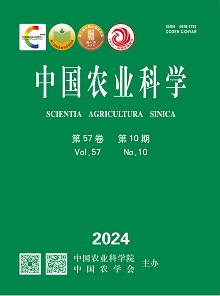【Objective】 Body size traits are the primary indicators for evaluating avian growth characteristics. By selecting molecular markers and candidate genes related to body size traits in Wenchang chickens, this study could provide the theoretical support for deciphering the genetic mechanisms and molecular breeding of body size traits. 【Method】 Three generations of Wenchang chicken lines in Hainan Province (n=2 024) were used in this study. Five body size traits were measured on each chicken at market age, including shank length, shank girth, body slope length, keel length, and chest width. Blood samples were collected for DNA extraction, followed by sequencing and genotyping using the "Jingxin No.1" 55 K chip. Genome-wide association analysis was conducted using GEMMA and PLINK software to identify SNP loci and important candidate genes associated with body size traits. LD analysis was performed to identify haplotypes significantly associated with body size traits. 【Result】 Phenotypic data showed that, at 113 days of age, Wenchang cockerels had average shank length of 8.64 cm, shank girth of 0.46 cm, body slope length of 19.73 cm, keel length of 12.32 cm, and chest width of 6.81 cm. Wenchang hens had average shank length of 6.98 cm, shank girth of 0.40 cm, body slope length of 17.79 cm, keel length of 10.45 cm, and chest width of 6.24 cm. After quality control, 42 206 SNPs and 2 024 individuals were retained for further analysis. PCA analysis using PLINK software revealed some dispersion among the three generations, prompting the inclusion of the top three principal components as covariates in the GWAS analysis to correct for population structure effects. The GWAS results identified 19 SNPs significantly or suggestively associated with shank length (P value=2.17789E-06/4.35578E-05), 23 SNPs associated with shank girth, 7 SNPs associated with body slope length, and 2 SNPs associated with keel length. No SNPs significantly associated with chest width were identified. Annotation of significant loci identified 16 candidate genes related to body size traits, including LDB2, NCAPG, FAM184B, and KCNIP4. LD haplotype analysis revealed 3 significant haplotypes in GGA4, with candidate genes LDB2 and NCAPG annotated in significant block loci. Regarding the shank length trait, two loci, including rs316943436 and rs313978573, were situated within the haplotype block. For shank girth, five loci, namely rs313196946AA, rs316242963, rs315796839, rs313978573, and rs734365522, were located within the haplotype block. In the case of body slope length, only one locus (rs313978573) resides within the haplotype block. 【Conclusion】 Through the GWAS method, those potential candidate genes for shank length, including SEPSECS, LGI2, DHX15, KCNIP4, NCAPG, FAM184B, LDB2, and CC2D2A, were identified. For shank girth, potential candidate genes encompassed FH, TBC1D1, DTHD1, SEPSECS, LGI2, SOD3, PPARGC1A, KCNIP4, NCAPG, FAM184B, CLRN2, LDB2, TAPT1, and CC2D2A. KCNIP4, LDB2, TAPT1, and NRXN3 were identified as potential candidate genes for body slope length, while FAM184B emerged as a potential candidate gene for keel length. In summary, this study established LDB2, NCAPG, and FAM184B as potential functional genes associated with various body size traits, providing the theoretical support for molecular marker-assisted selection in enhancing body performance in Wenchang chickens.









